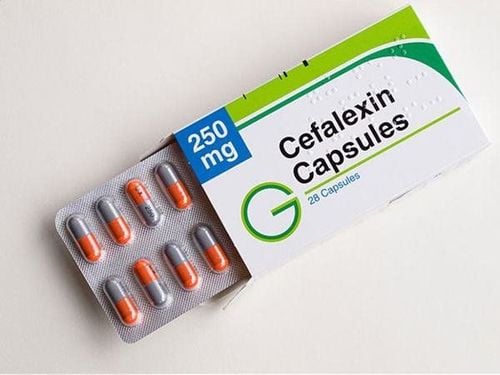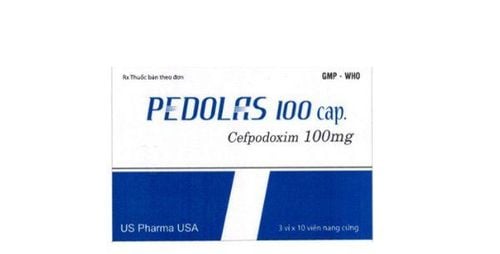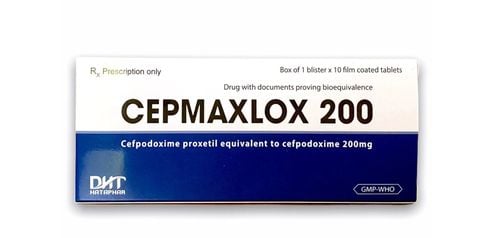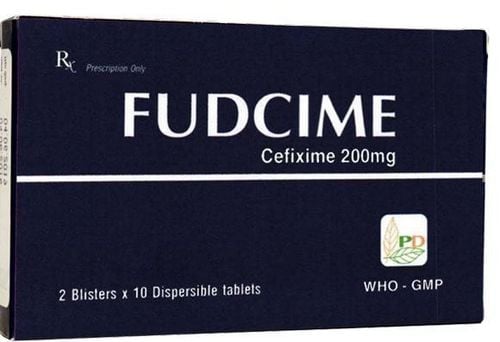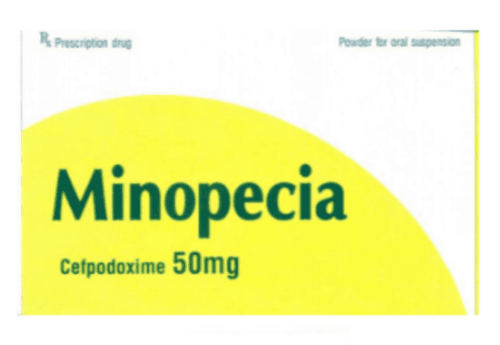This is an automatically translated article.
Nadixime 100DT is an antibiotic, with the main ingredient being Cefpodoxime - a 3rd generation cephalosporin antibiotic. Nadixime is used in the treatment of infections in the respiratory tract, urinary tract, skin,...1. Effects of Nadixime 100DT
Nadixime belongs to the group of drugs for the treatment of parasites, anti-infectives, antifungals and viruses, with the main ingredient being Cefpodoxime 100mg. Cefpodoxime is a 3rd generation cephalosporin antibiotic with antibacterial activity against gram-negative and gram-positive bacteria.Nadixime is prepared in the form of dispersible tablets and is indicated for use in the treatment of the following infections:
Upper respiratory tract infections: sinusitis, acute otitis media, pharyngitis, tonsillitis. Acute community-acquired pneumonia. Uncomplicated and acute gonococcal infection Urinary tract infection and uncomplicated skin and skin structure infections.
2. How to use and dose of Nadixime 100DT
Nadixime is taken orally, should be dispersed in water before use by putting the tablet in a tablespoon of water, allowing the drug to dissolve completely and then drinking. The medicine should be taken with food.Dosage of Nadixime in adults depends on the specific treatment purpose as follows:
Upper respiratory tract infections (including pharyngitis and tonsillitis): 100mg/time, administered every 12 hours and the duration of treatment is 5 - 10 days or 7 days. Community-acquired pneumonia: 200mg / time, used every 12 hours and treatment time from 10-14 days. Acute gonococcal infection (uncomplicated): Use a single dose of Nadixime 200mg/time. Urinary tract infections (uncomplicated): 100mg/time, administered every 12 hours and treatment duration is 7 days or 5-10 days. Skin and skin structure infections: 400mg / time, used every 12 hours and treatment time from 7-14 days. Dosage of Nadixime in children depends on the specific treatment purpose as follows:
Acute otitis media: 10mg/kg body weight/day, divided into 2 doses per day, used for 10 days. The maximum dose is 400mg/day. Pharyngitis, tonsillitis: 10mg/kg body weight/day, divided into 2 doses per day, used for 10 days. The maximum dose is 200mg/day. Patients with renal failure with creatinine clearance less than 30 ml/min should take Nadixime 24 hours apart. Patients with cirrhosis do not require dose adjustment.
To date there have been no reports of an overdose of Nadixime. However, if this happens, the patient needs to be hemodialysis or peritoneal dialysis to remove the drug from the body, especially patients with kidney failure.
3. Side effects of Nadixime 100DT
Using Nadixime can cause some unwanted side effects with the frequency of occurrence as follows:Common: Abdominal pain, nausea, vomiting, diarrhea, headache, urticaria, rash, itching. Uncommon: Arthralgia, fever, anaphylactic reactions, erythema multiforme, hepatitis, liver enzyme disorders, cholestatic jaundice. Rare: Blood disorders, eosinophilia, interstitial nephritis (reversible), agitation, hyperactivity, hypertonia, dizziness, dizziness, trouble sleeping, confusion. If you see any strange symptoms after taking Nadixime, you should immediately notify your doctor or go to a medical facility for a health check.
4. Some notes when using Nadixime 100DT
Do not use Nadixime in people with hypersensitivity or history of sensitivity to the drug's components, people with porphyria metabolism disorders. Before taking Nadixime, patients need to tell their doctor or pharmacist about a history of drug allergies, especially those with hypersensitivity to penicillin, kidney failure. Pregnant women are only allowed to use Nadixime in cases where it is absolutely necessary. Breastfeeding women need to carefully weigh the use of the drug, the risks and benefits to the mother and the infant. Concomitant administration of Nadixime with antacids or H2 inhibitors may decrease plasma concentrations of the drug. Monitor renal function in patients concomitantly taking Nadixime with nephrotoxic compounds. The use of Nadixime may change some laboratory parameters. The use of Nadixime 100DT is to kill a number of bacteria that cause diseases in the respiratory tract such as ear - sinus - throat infection, community pneumonia, dermatitis.Please dial HOTLINE for more information or register for an appointment HERE. Download MyVinmec app to make appointments faster and to manage your bookings easily.




